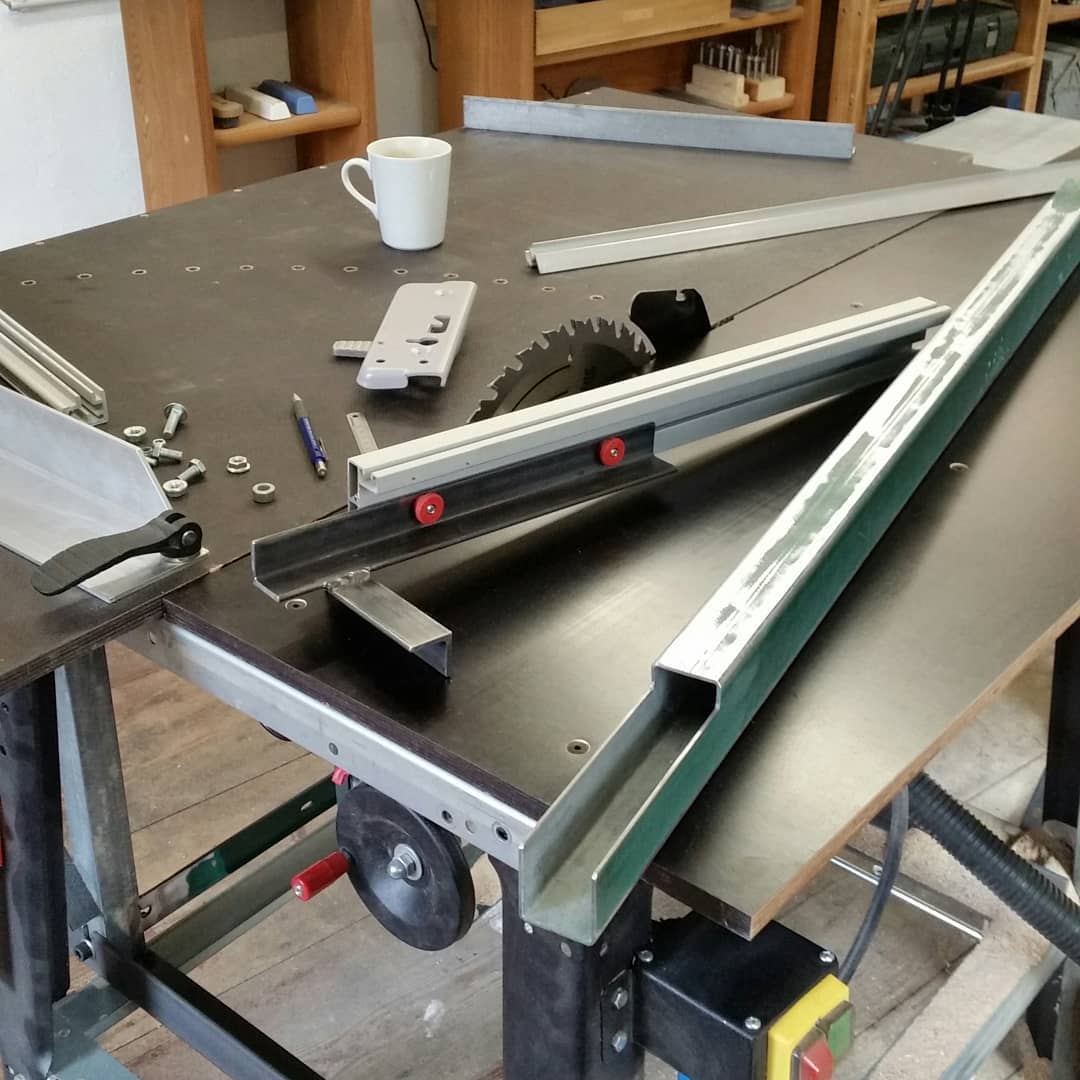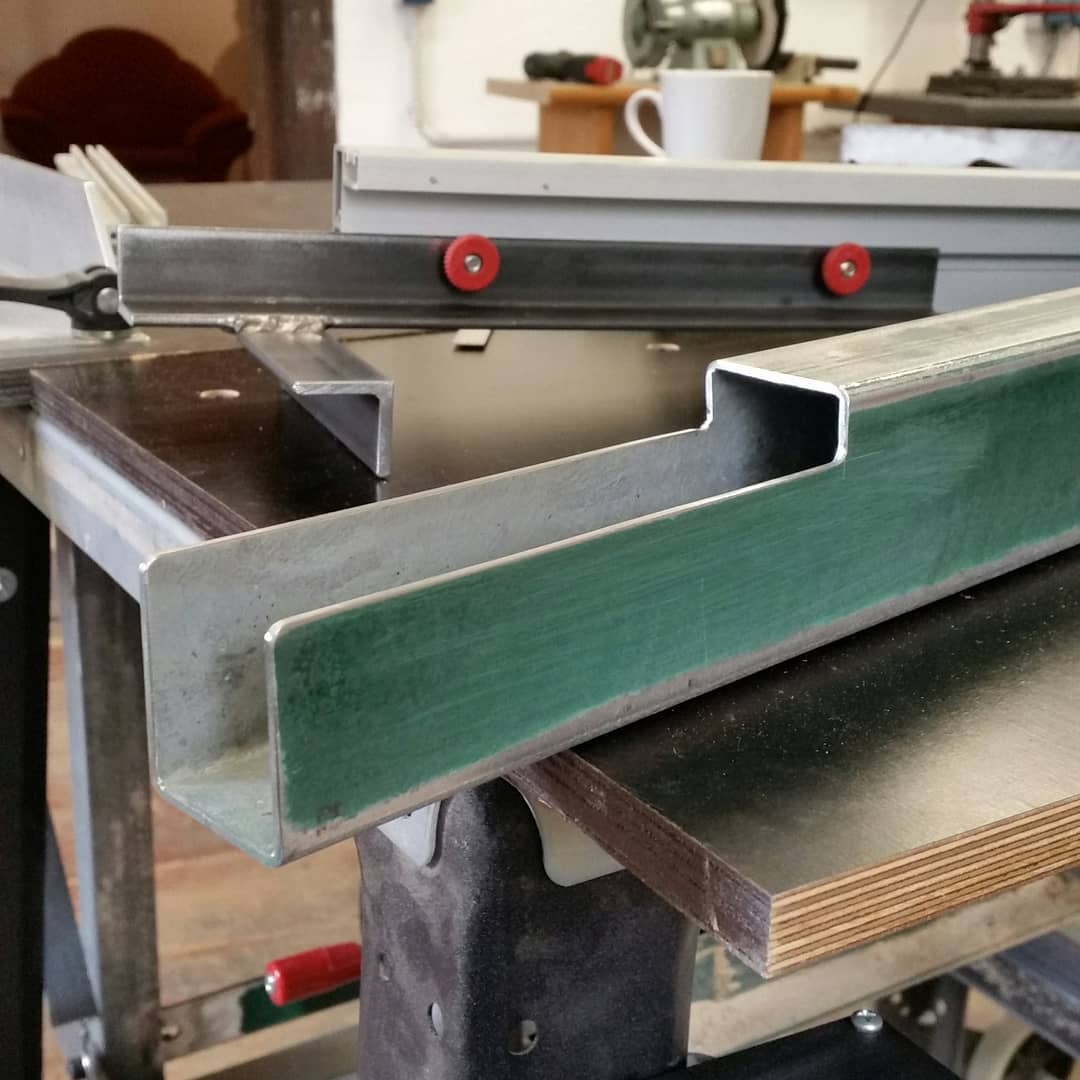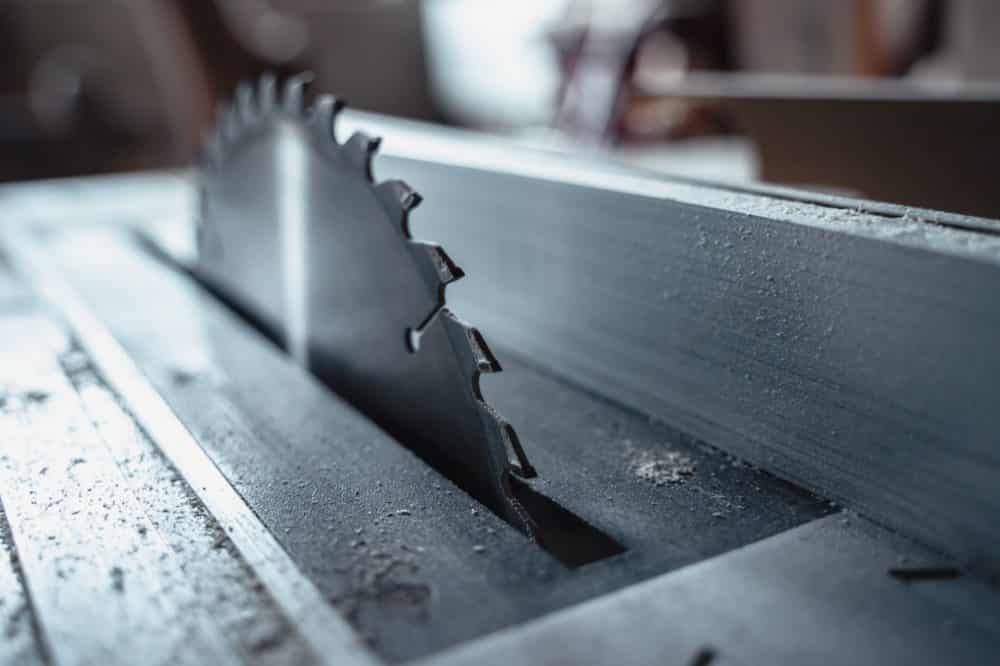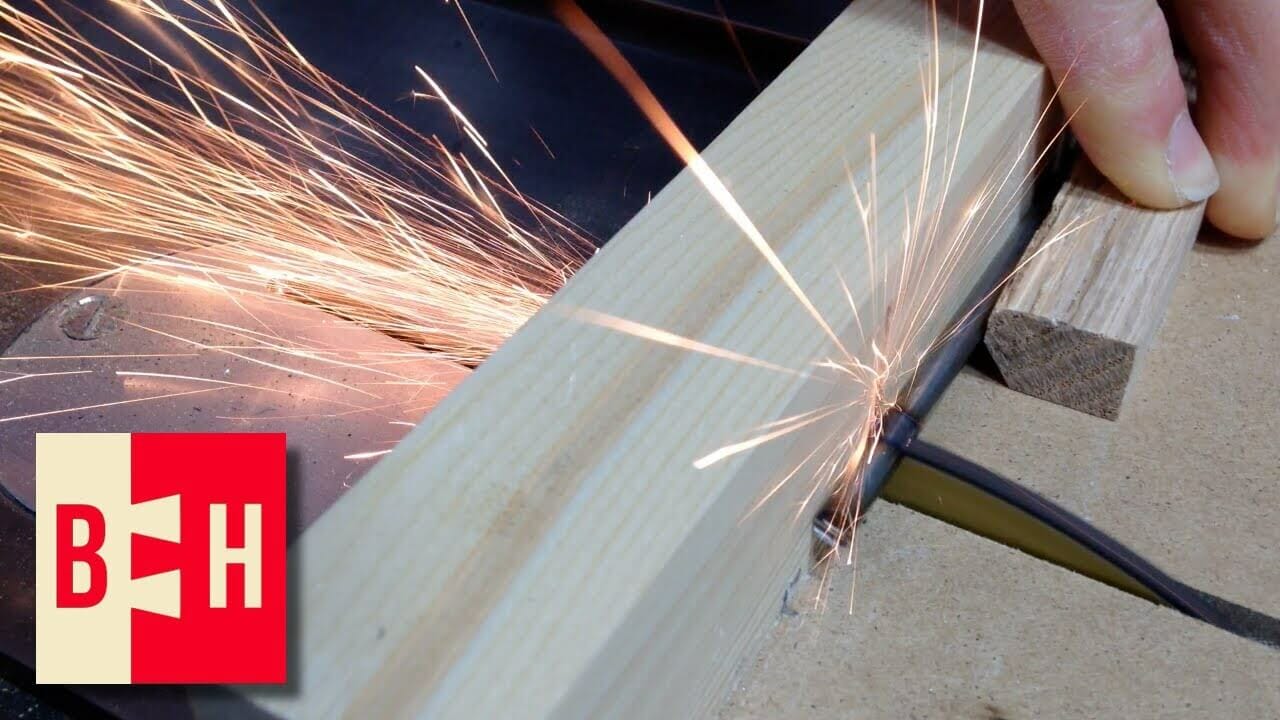Can a Table Saw Cut Metal or Aluminum With a Standard Blade?
So can you use a table saw to cut metal? The answer is yes; a table saw is a tool that can cut metal. But there are practical steps you’re going to have to take to cut metal safely with a table saw.
Firstly, you need to determine the kind of metal you’ll be attempting to cut (ferrous or non-ferrous metals). Plus, the kind of blade you should use and the size and thickness of the metal.
So, to make sure you know how to cut metal properly and, most importantly, safely, here’s our guide to using a table saw to cut metal.
Safety Tips To Consider When Cutting Metal
Before we get into the meat of how to use a table saw to cut metal, let’s go over some safety measures.
These must be followed, and if you’re not feeling confident that you can saw the metal safely, then you can always take it to a workshop or hardware store and see if they can saw through it for you.
- Wear goggles/safety glasses. When you’re cutting wood, there are chips and pieces of sawdust flying and floating around. These can easily get in your eye and cause irritation or even scratches. With metal, the danger is even worse. We won’t go into the specifics but just imagine what it might feel like to have a small piece of metal in your eye. It’s not going to be pleasant. So, protective goggles or safety glasses are absolutely necessary.
- Wear gloves. Protective gloves are another necessity. Even holding a sheet of metal is a little risky if it has sharp edges. The kind of metal that can be cut with a table saw will be very thin. So the edges can potentially cause cuts and grazes. So it’s important to make sure that your hands are completely covered in thick, durable work gloves. These will also protect your hands from the blade of the saw itself.
- Cover up. This is another super important step to take. Make sure that you wear long-sleeve clothing, thick pants (jeans are fine), and sturdy shoes. Those pieces of metal can fly off very quickly and they will be incredibly sharp. So, it’s better to be safe than sorry and make sure you have as much of your skin covered as possible.
How to Cut Metal with a Table Saw Safely
Now that you know the main safety precautions you need to take, let’s move on to how you can cut metal with a table saw.

1. Select the Right Metal Cutting Blade
This is very important. Not every blade can be used for cutting metal. But there are some which can cut through any kind of metal.
Before choosing your blade, you need to know what kind of metal you’re working with. In terms of hardness, metal is divided into two classifications: Ferrous and Non-Ferrous.
Ferrous metals contain iron within their structure. For example, steel. Ferrous metals are hard and tough.
Non-Ferrous metals, such as copper and aluminum, are softer. But this doesn’t mean that you can only cut Non-Ferrous metals.
Choose a blade that is strong enough to cut through Ferrous metals. This means that they can cut through both Ferrous and Non-Ferrous metal.
But, if you can, you should find a blade that is specific to the metal you’re cutting. So, if you know you will only be cutting Non-Ferrous metal, then it’s a good idea to get a blade designed for Non-Ferrous metal.
2. Check the Speed
Speed is another important factor to consider. To cut through metal properly, you need to cut quickly and swiftly. The specific feed will depend on the type of metal you’re using.
For example, aluminum should be cut between 750 fpm and 1500 fpm.
This is because the density of the metals and their overall thickness will determine how tough it will be to cut. Cutting metal is a little trickier than cutting wood.
Wood is much softer than metal. So it is very easy to cut through. Metal, on the other hand, will give more resistance.
3. Watch the Kickback
This is an incredibly important thing to remember when cutting metal. You should always stay away from the kickback zone, no matter what material you’re cutting.
But you should be especially careful with metal. As we have just mentioned, metal will give more resistance. This means that the kickback will be more forceful. So you need to take extra precautions.
This is true for every single aspect of cutting metal with a table saw. Take the precautions you usually do when cutting wood. And then level up.
Cutting wood is dangerous. But cutting metal is even more dangerous.
4. Cut the Metal
Now it’s time to actually cut the metal. Make sure to stand as clear as you can and give the metal space. Sparks will potentially fly as the metal you’re cutting meets the metal of the blade.
It’s so important to make sure you are as safe as possible. The positioning of your hands and general motion won’t be very different from when you are cutting wood.
But cutting metal is more dangerous. So you need to take greater precautions.

Types of Metal
Now you know how to cut metal, let’s go over which metals are easiest to cut. As we mentioned above, some metals are easier to cut than others.
To give you a simple guide, here are which metals are Ferrous and which are Non-Ferrous.
|
Ferrous Metals |
Non-Ferrous Metal |
|
Steel |
Copper |
|
Carbon Steel |
Aluminum |
|
Alloy Steels |
Lead |
|
Stainless Steel |
Zinc |
|
Cast-Iron |
Tin |
This list probably isn’t surprising as most people have a good understanding of which metals are soft and which are hard.
But this is more of an instinctual and logical knowledge. i.e. you know that the material used to make a cast-iron pot is going to be harder and tougher than the material used to make a soda can.
But that doesn’t necessarily mean that you know exactly which metals you can cut with your table saw.
Generally speaking, you should avoid cutting anything in the ferrous metal column. This is because tough metals such as these will require a stronger saw than your DIY table saw. (Even if it’s a high-quality saw in great condition).
It’s really not worth the risk of hurting yourself, damaging your table saw or damaging the metal you’re trying to cut.
In Conclusion
So, there you have it. That’s pretty much everything you need to know about cutting metal with a table saw. The most important thing to remember is that it is a dangerous process.
So you need to take every safety precaution that you can. And, if you aren’t feeling confident that you can cut the metal safely, there are plenty of professionals who can do it for you.
But, for the time being, you’re good to go and get on with your project. (Just so long as you do everything properly…)


